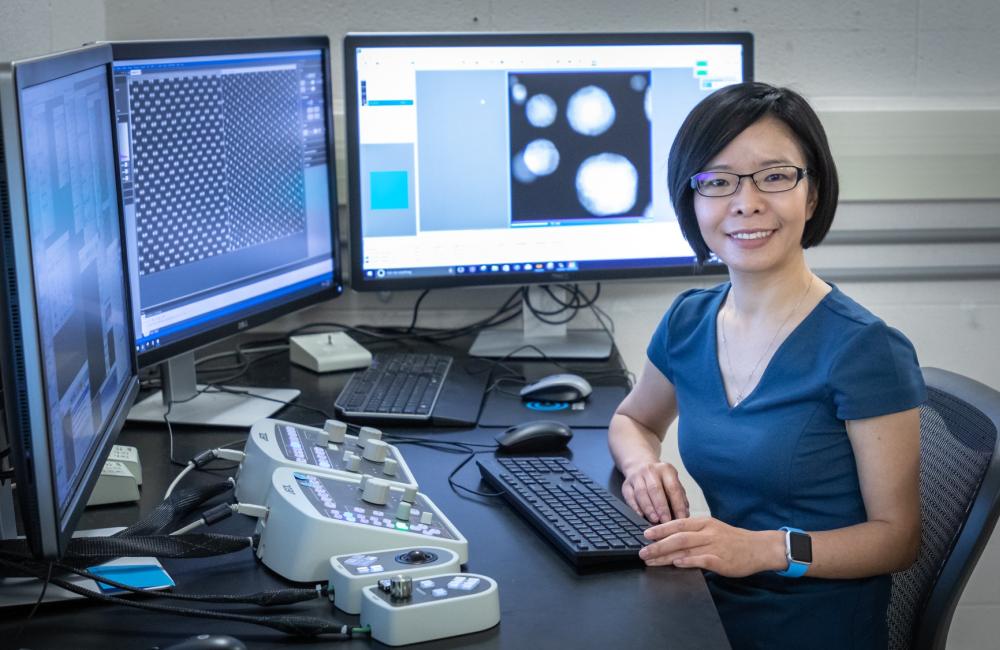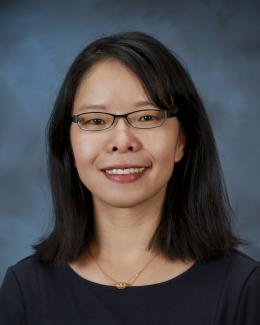Miaofang Chi. Image credit: Carlos Jones, ORNL
In 2019, nine ORNL early career researchers were recognized with prestigious awards from the White House and the Department of Energy—the Presidential Early Career Award for Scientists and Engineers, or PECASE, and the DOE Early Career Research Program Award. We sat down with these promising young scientists to talk about their backgrounds and current research.
Ever since she first encountered microscopes in elementary school, Miaofang Chi has been enchanted by the idea of unlocking worlds invisible to the naked eye.
“To me, it’s a kind of artwork,” Chi said. A lifelong photography lover, she views microscopy similarly, as a way to capture and share fantastic moments that might otherwise be obscured.
Chi has committed her career to electron microscopy, which uses electron beams to magnify items to degrees unachievable through optical methods. After earning her master’s in materials science and engineering from the Shanghai Institute of Ceramics, she studied scanning transmission electron microscopy—or STEM—during her Ph.D. program at the University of California, Davis. She joined ORNL in 2008.
Today’s state-of-the-art STEM can observe the atomic makeup of materials and reveal how atoms bond and interact. However, viewing electric fields—necessary for Chi’s research on batteries—is still difficult.
Chi sought solutions in a novel technique called STEM-based differential phase contrast, or DPC, imaging, which showed promise in imaging traditionally difficult light elements, like lithium and hydrogen. Successes with the technique inspired her to push it further.
“I said, ‘Well, we can see nuclei, even single protons; how about electrons by themselves?’” she explained.
She’ll seek to image the subatomic particles, which have never been directly observed through microscopy, for her Early Career Award-winning proposal, “Probing anionic electron behavior in electrides.”
In her research, she’ll use DPC imaging to “see” electrons in newly discovered materials called “electrides.” The materials have unusual structures and localized “free” electrons, unlike typical substances.
“Because of those special electrons, electrides could have really interesting quantum phenomena” that could improve energy technologies and nanoelectronics, Chi said.
The work combines two major themes of her career—advancing innovative microscopy techniques and applying them to new materials.
“As I progressed in microscopy, I started seeing it as a way to understand how materials behave,” Chi said. “Then we can design and develop materials for specific applications, which can improve daily life.”—Abby Bower



